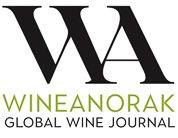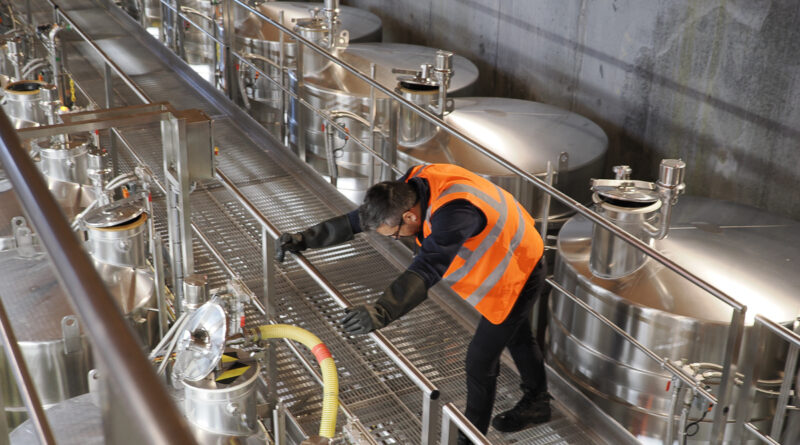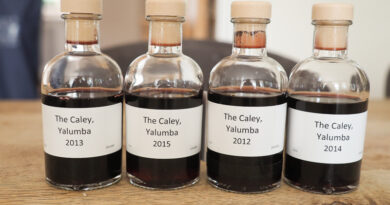Leading English sparkling wine producer Nyetimber are almost through with their vintage, and it’s one of the earliest and best ever
Back in 1988, American couple Stuart and Sandy Moss changed the face of English wine forever. Back at this time the UK wine scene was very different. There were around 800 hectares of vines, but most vineyards were small, and focused on early ripening Germanic varieties such as Bacchus, Reichensteiner, Seyval Blanc, Huxelrebe and Madeleine Angevine. The whole industry had a hobby feel to it. The Mosses had incredible vision, and flying in the face of industry advice they planted Chardonnay, Pinot Noir and Pinot Meunier with a view to making top quality sparkling wine. Nyetimber was born!
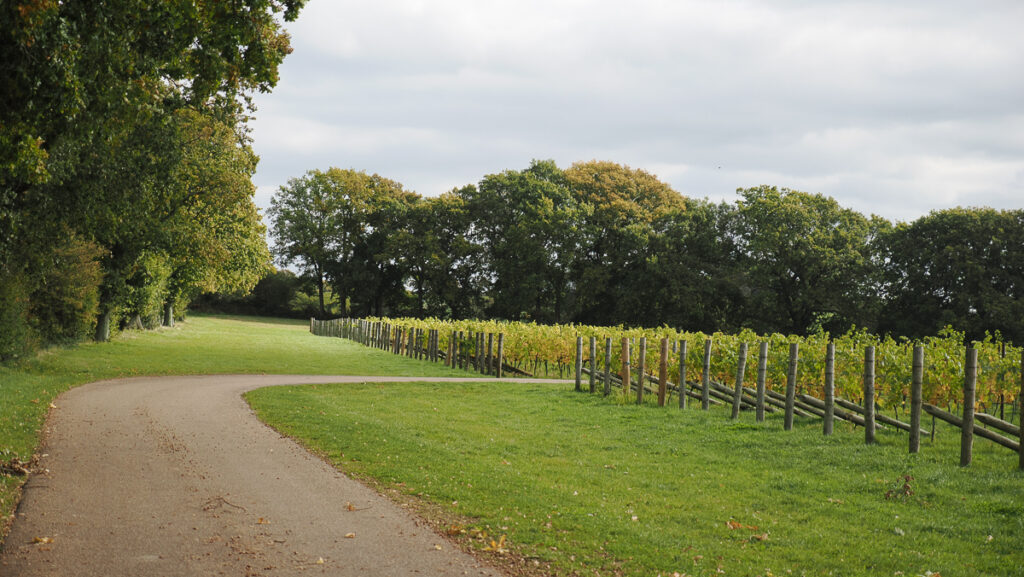
And success was almost immediate. The 1992 Blanc de Blancs, released in 1996, and the first Classic Cuvée, 1993, released a year later, were met with great critical acclaim. The big change for Nyetimber, however, was when it was bought by its current owner, Dutch entrepreneur Eric Heerema, for £7.4 million in 2006. Heerema was already resident in the UK and had his own small vineyard a few miles up the road from Nyetimber. He decided to invest heavily in his new project and grew the vineyards from 16 hectares up to its current level of 430 hectares. This is now the biggest sparkling-focused project in the UK, with 10% of the UK’s vineyards, yet maintaining a no-compromise approach to quality. It’s a remarkable project.
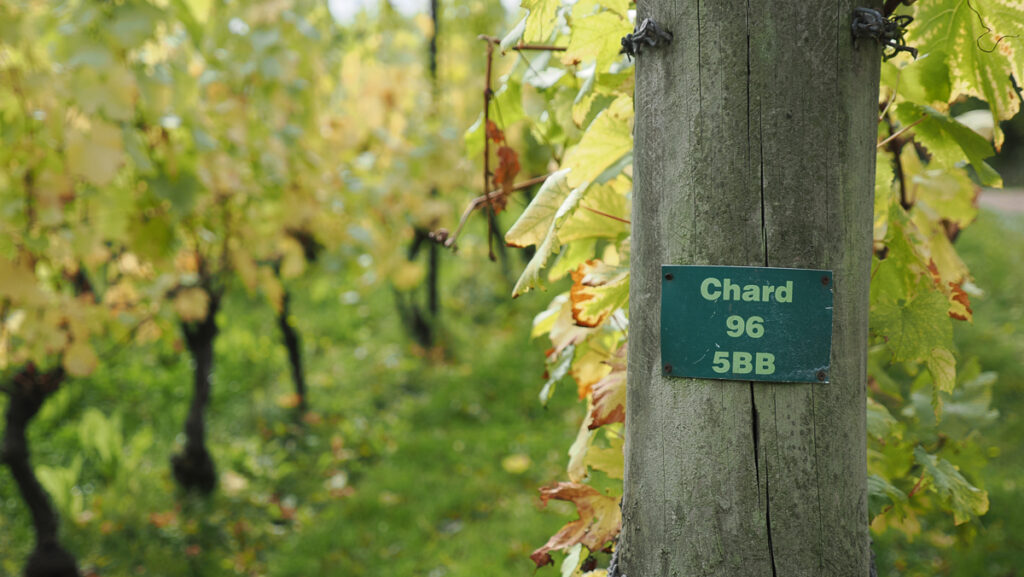
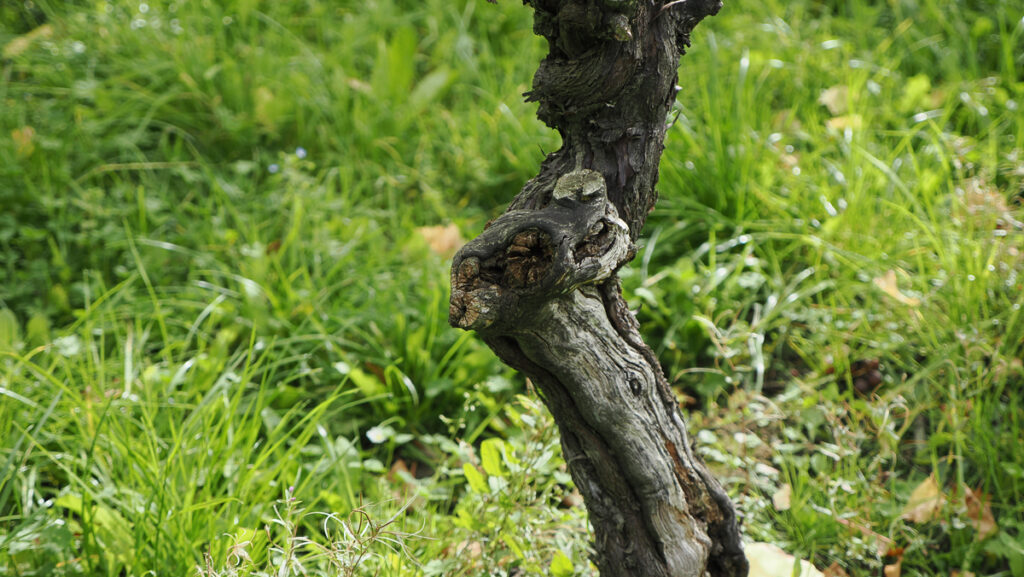
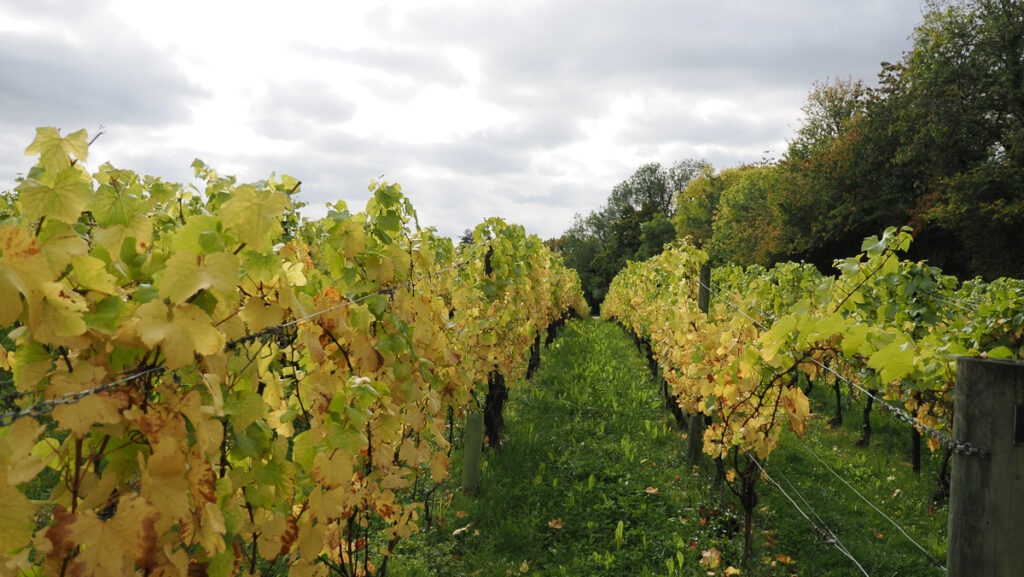
In 2007 he appointed wife and husband team Cherie Spriggs and Brad Greatrix to make the wines. Cherie is the boss. They moved over to the UK from Canada, and immediately took a different approach to winemaking than that pursued differently. The results have been amazing, and Cherie has twice been recognized as sparkling winemaker of the year at the International Wine Challenge, a title that has otherwise only ever gone to winemakers from Champagne.
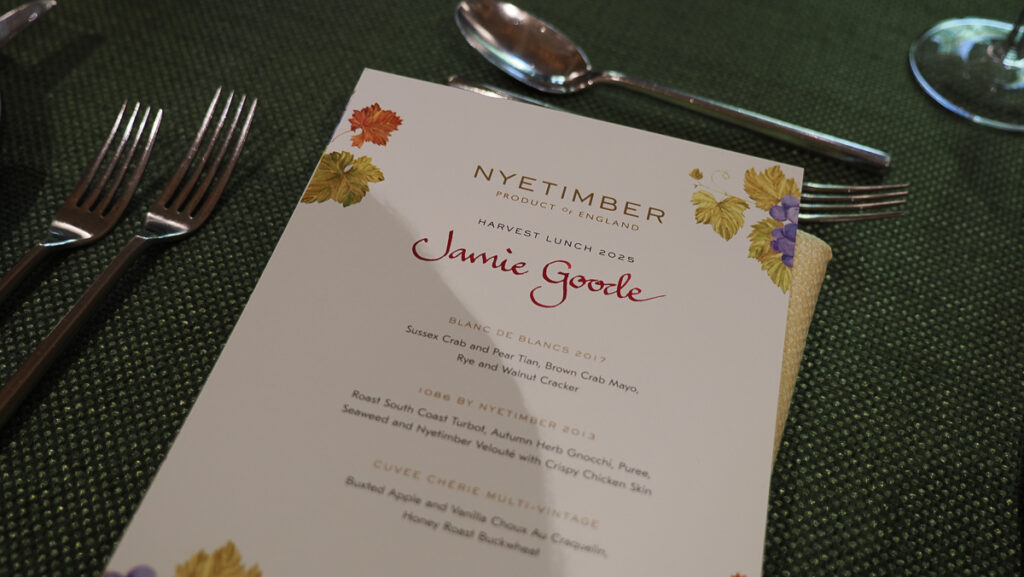
It’s harvest time at Nyetimber, and as usual, they are holding their harvest lunch to welcome the trade. Normally in late September harvest would have just begun, but this year it’s almost over: 375 hectares of the 430 have already been picked. And as a result, part of the usual harvest lunch activity, picking some of the grapes, has to be stage managed this year by leaving three rows of Pinot Noir to set the guests loose on.
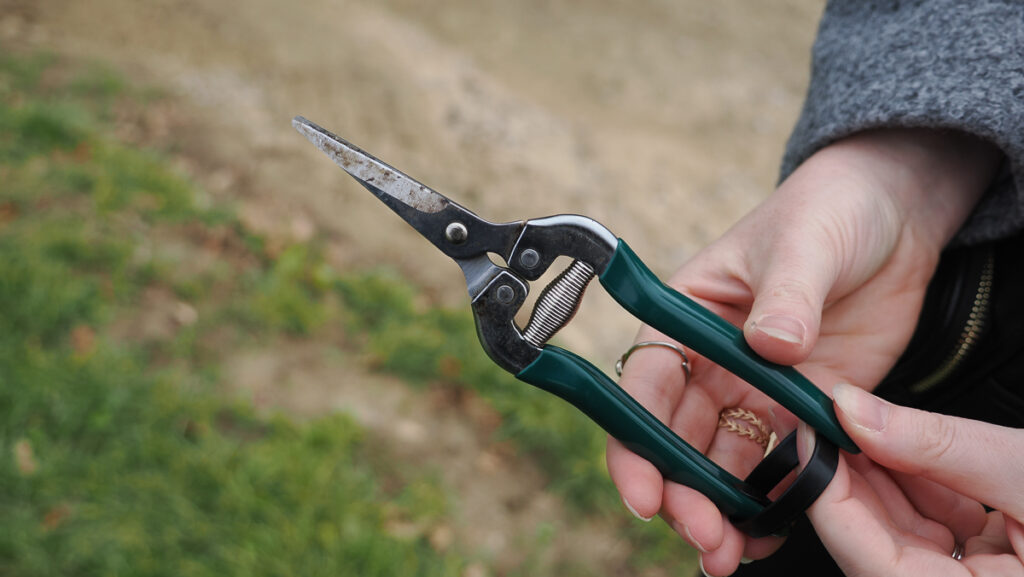
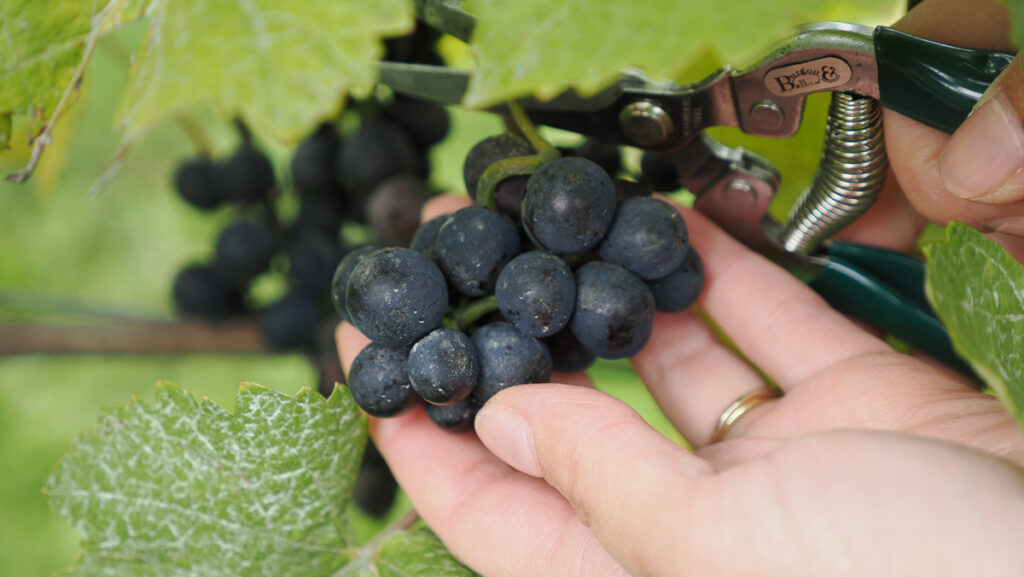
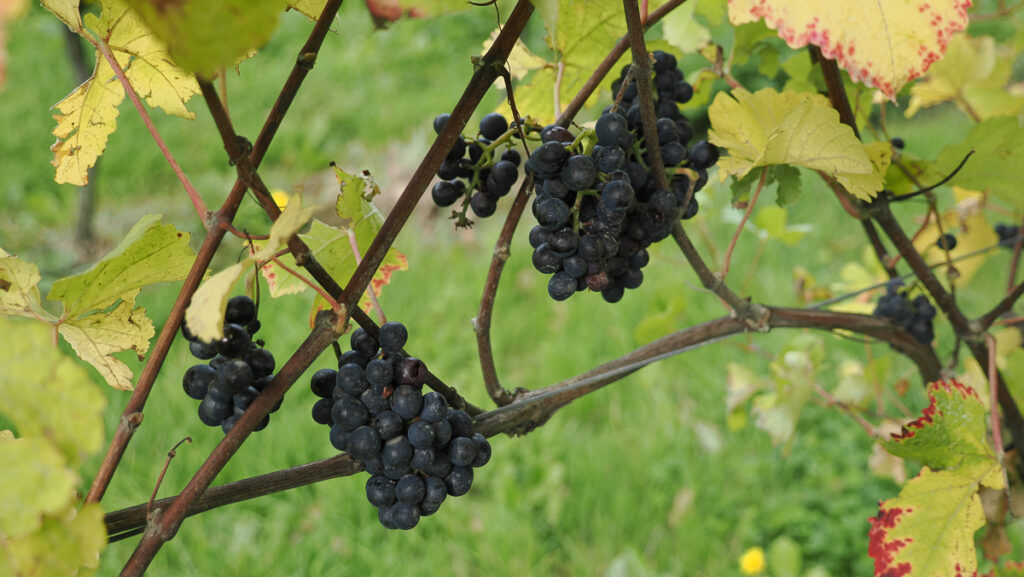
Nyetimber makes wine only from estate-owned fruit, and they now have 11 vineyard sites. Six are in West Sussex, three in Kent and two are in Hampshire. Soils are either greensand (decomposed sandstone) or limestone-based. All are sheltered from coastal impact (the South Downs is useful here) and all are on south facing slopes. All the wines made here are traditional method sparkling wine, with at least three years on the lees.
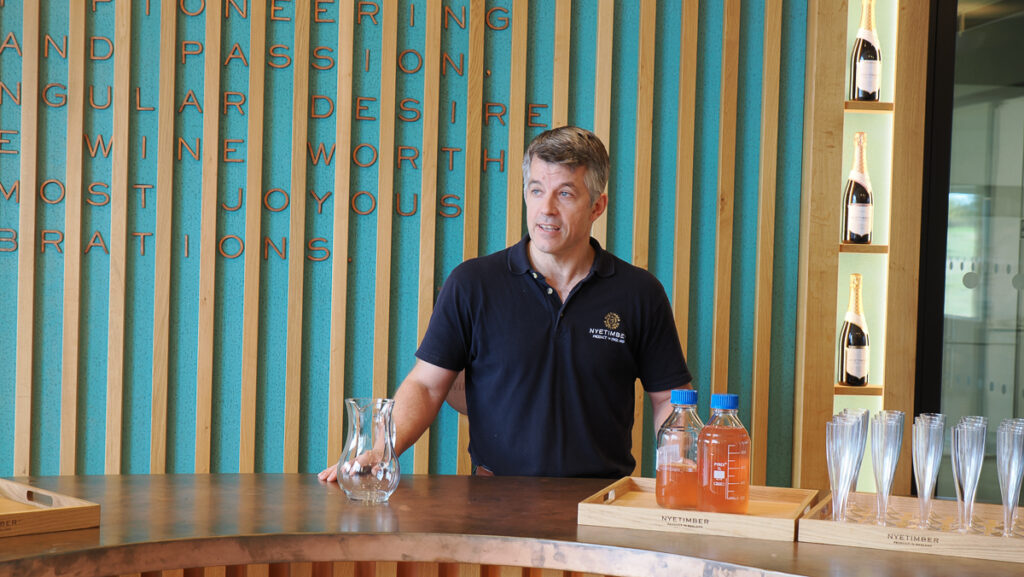
We head to meet Brad Greatrix in the press centre. The main winery is on an industrial estate in Crawley (this is a very practical solution), but the critical stage of pressing takes place at two press centres in the vineyards. We visit the main one, and it’s really stunning: a winemaker’s dream.
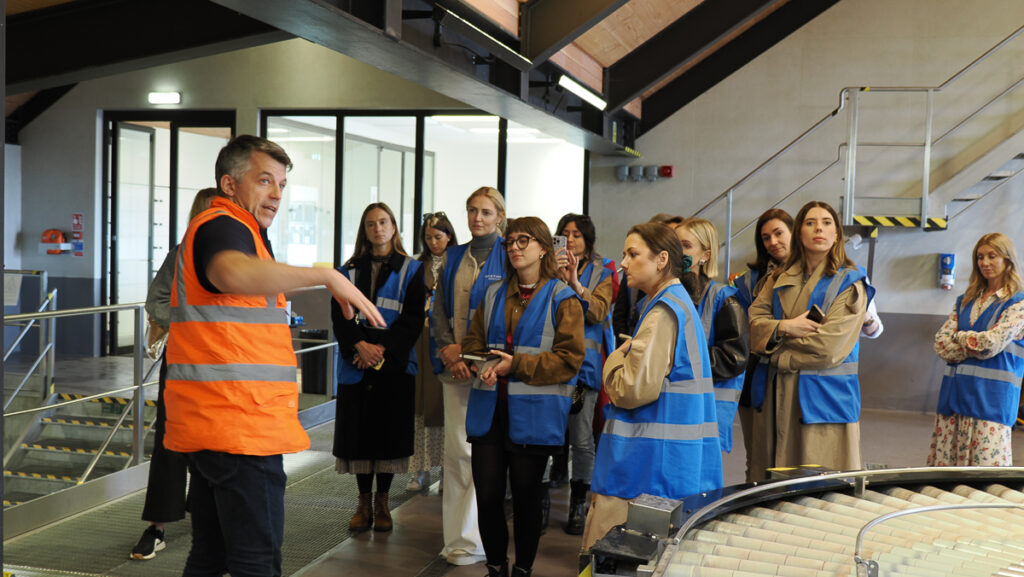
This is Brad’s 19th vintage, and he tells us that it is day 14 of harvest. He looks quite tired: sleep is at a premium during vintage. In order to process all the grapes, the press centre runs 24 h with two shifts. This is the earliest every harvest, but he’s excited about quality. The summer was long and dry, and the only issue was some problematic rainfall during September, although things were dry during harvest. In terms of comparison, this vintage is most similar to the very successful 2018.
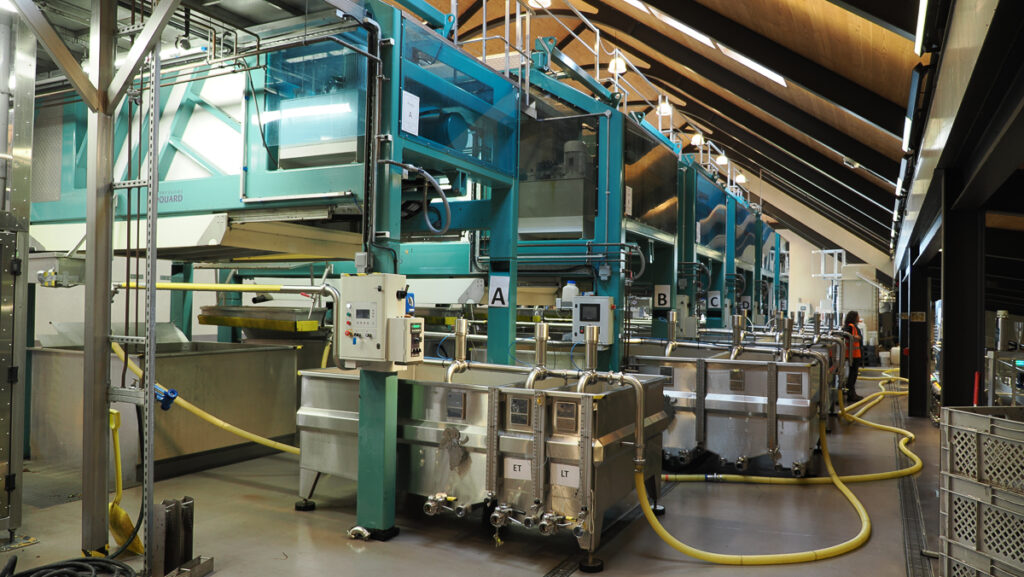
In terms of quantity, yields are not particularly high, at around 5.5 tons/hectare. Champagne often gets 15 tons/hectare. This is despite a really warm season with ideal conditions around flowering. This is because the previous year, 2024, had mixed weather and the fate of the bud primordia – whether they make flower clusters or tendrils – is determined by the previous year. Still, it will mean that around 1.8 million bottles of Nyetimber fizz will be made from this vintage, and they’ll hit the market in around five years.
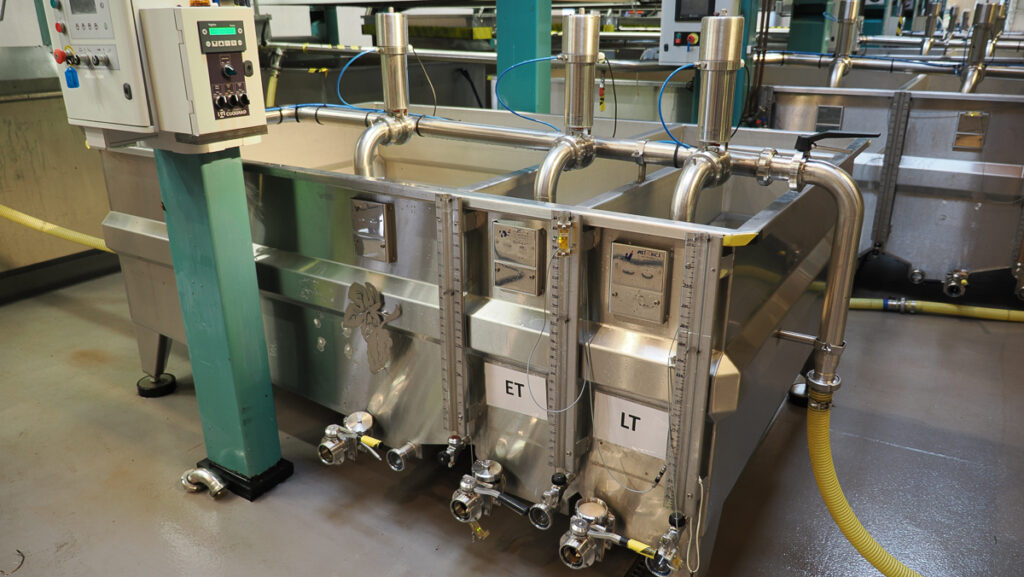
Brad explains that during the harvest there are about 400-500 pickers busy in the vineyards, picking the grapes into small 15 kg crates. These are taken to one of two press centres, and they stack up during the day. By 7 pm the courtyard is filled with crates of grapes, and pressing is underway.
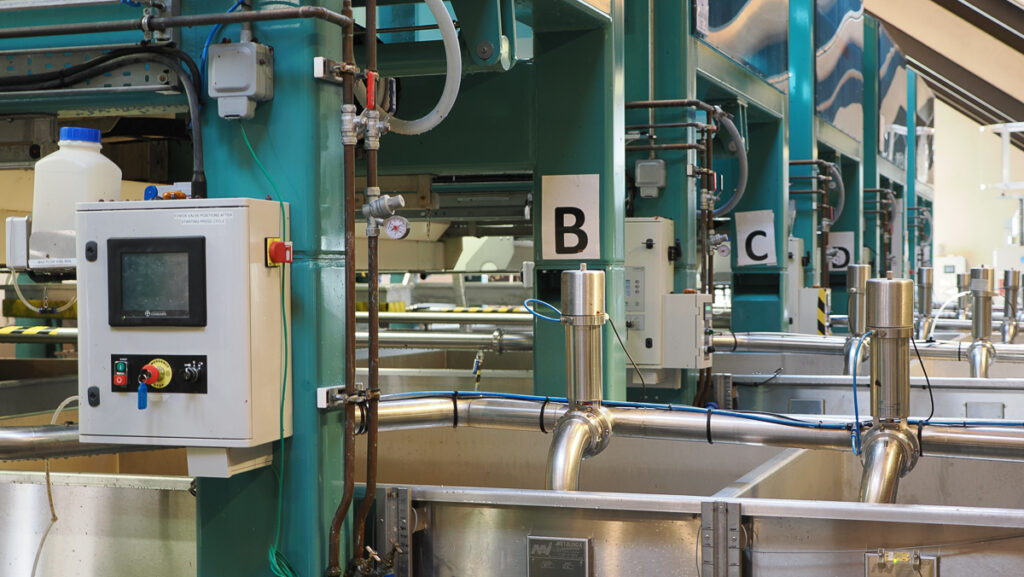
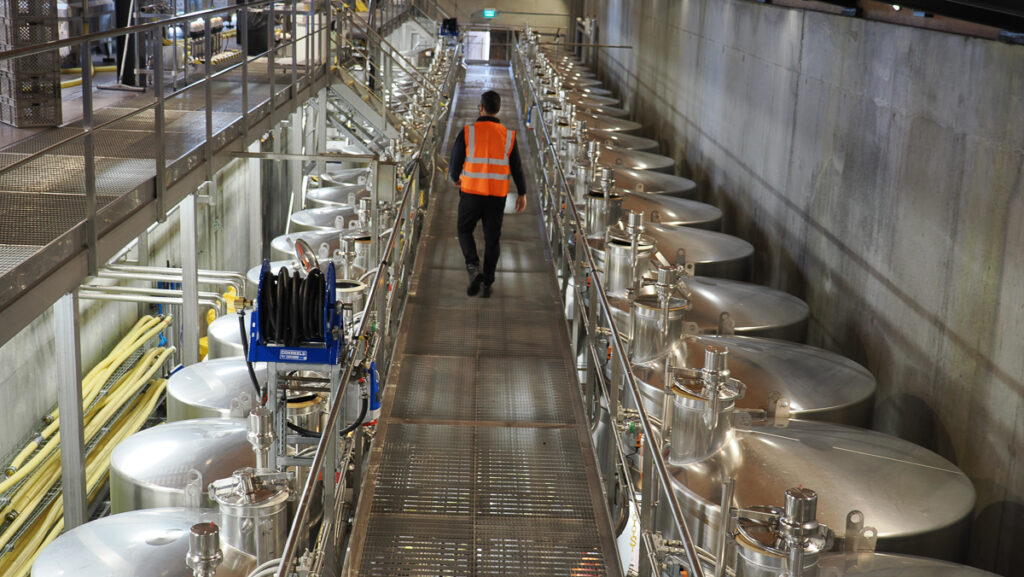
This is a critical stage in terms of quality, and that’s why Nyetimber have invested so heavily in their pressing centres. The one we visit has six Coquard presses, one of which has a four tonne capacity, and the rest eight tonne. These are state of the art sparkling wine presses, and I’ve never seen a press centre like this, even in Champagne. Brad quips that the Coquard factory is one of the few places where he is called Mr Greatrix.
https://www.coquardpresses.com/en/our-products/automatic-tilted-plate-press
The presses are loaded automatically, with a special system that takes the crates and tips them in. It’s quicker loading the press this way, and this is thought to be a way of helping with quality. Using this system means the press can be loaded in 25 minutes rather than 35 minutes for manual filling.
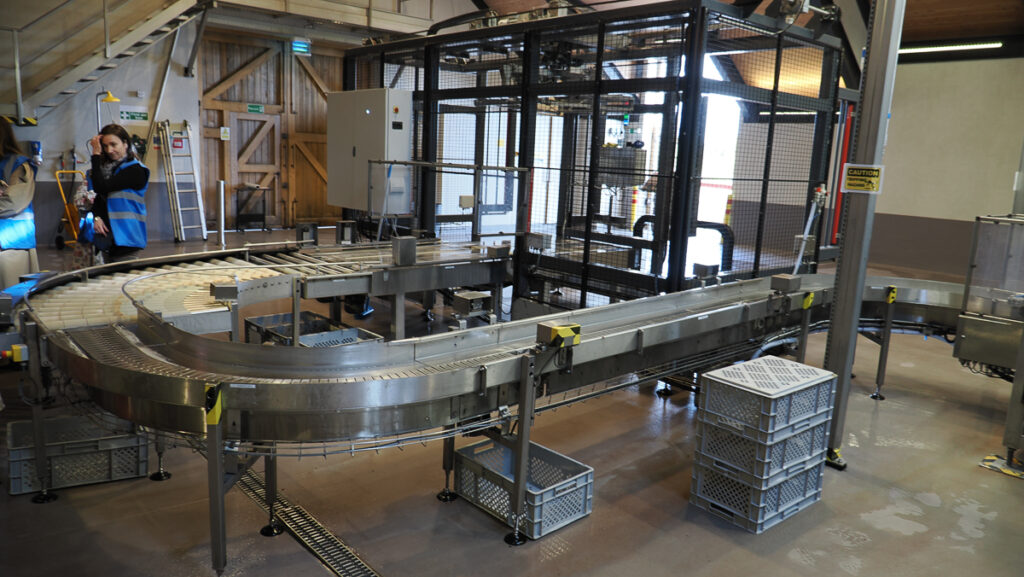
The Coquard PIE presses are very gentle. As with all sparkling wine pressing, there are different fractions. The liquid that comes off as the press is loaded is kept to one side and then the good stuff comes out. The first 510 litres per ton is called the cuvée, and it’s the finest quality. Then the next fraction is called the taille, and this has a bit more colour and slightly lower acidity. It can be used to make sparkling wine, but it doesn’t have the same refinement. Then after this, it’s the rebêche, which is sent for distilling.
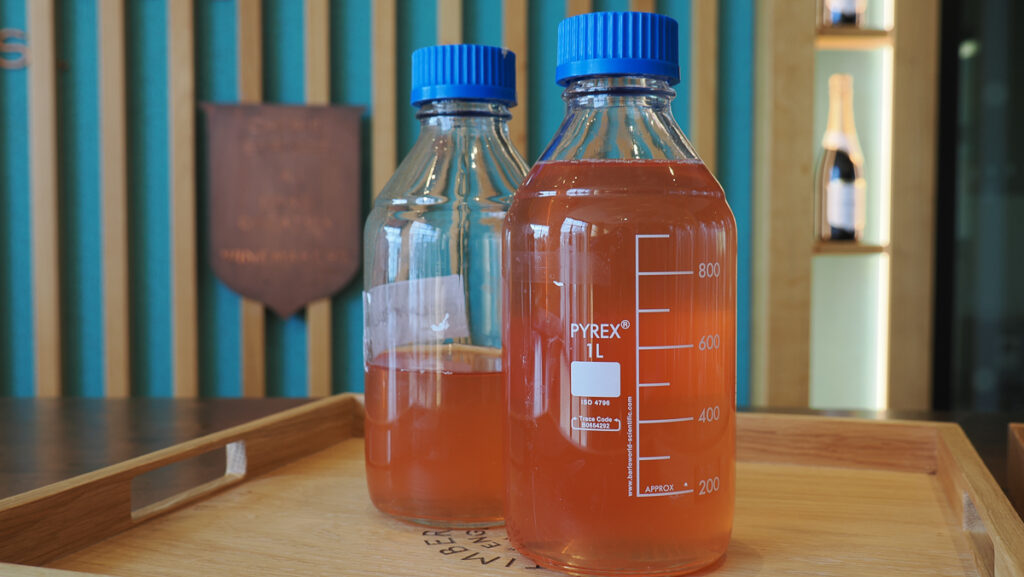
We tried two Pinot Noir juices that had recently been pressed. The lighter-coloured cuvée and then the darker rebêche. To taste juices, you have to see past the sugar, which makes it hard if you aren’t used to it. Brad explained that the rebêche might taste great, but it has lower acidity and more tannin and would make a bad sparkling wine.
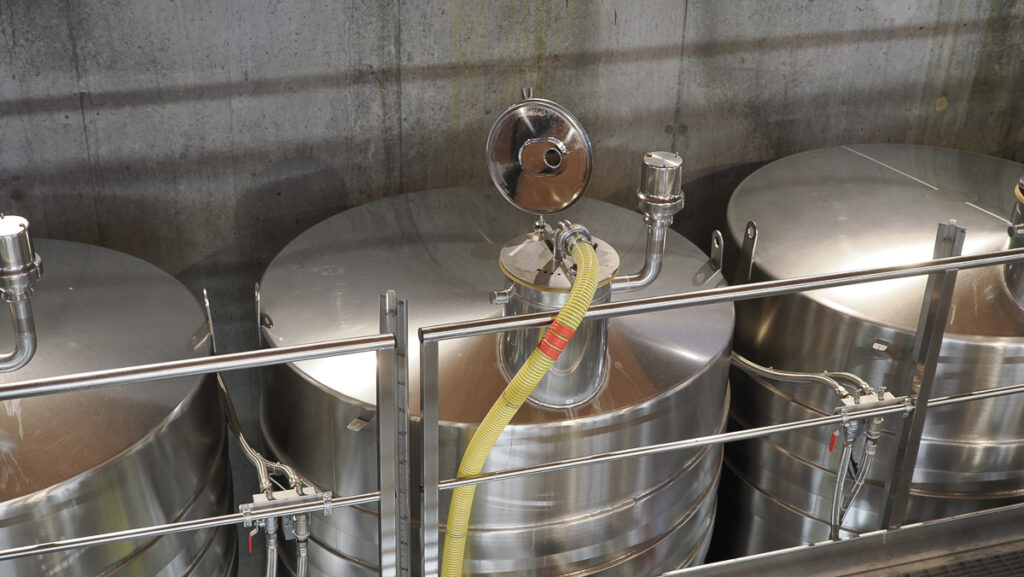
The key to Nyetimber’s winemaking is keeping vineyard lots separate, fermenting the same blocks together, and then making a set of base wines that can be blended together to produce something special. It’s that separation of vineyard blocks, understanding how the wines each makes might fit into a blend, and then executing this blending smartly that results in such good wines.
This is a remarkable operation, and the resulting wines are excellent. I don’t think I’ve seen a sparkling wine house operate at this sort of scale with this sort of precision.
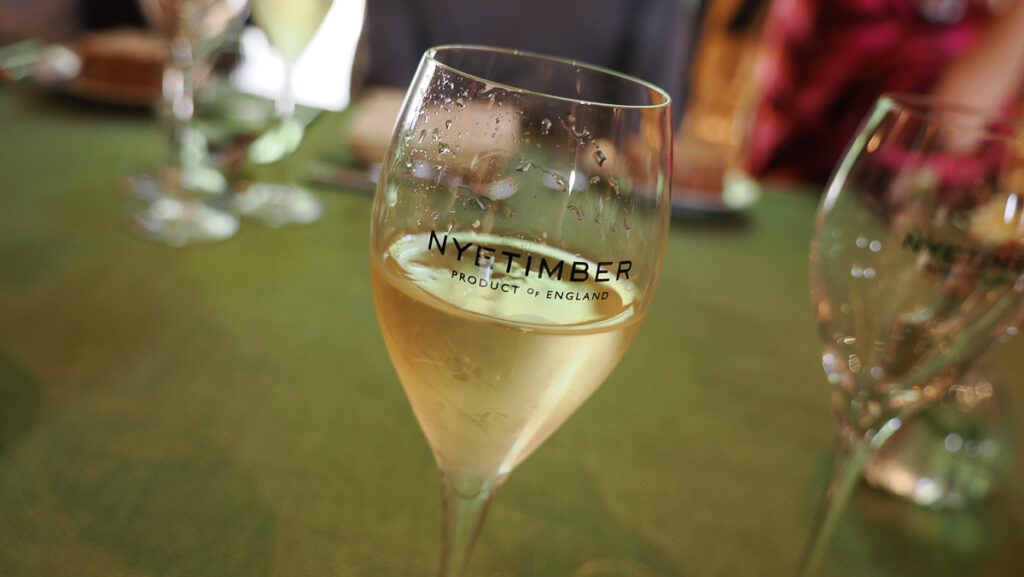
Of course, with traditional method fizz, patience is required. This is a long game. It won’t be for many years that we will see the results of the 2025 harvest appear in bottle, but it will be something to look forward to.
